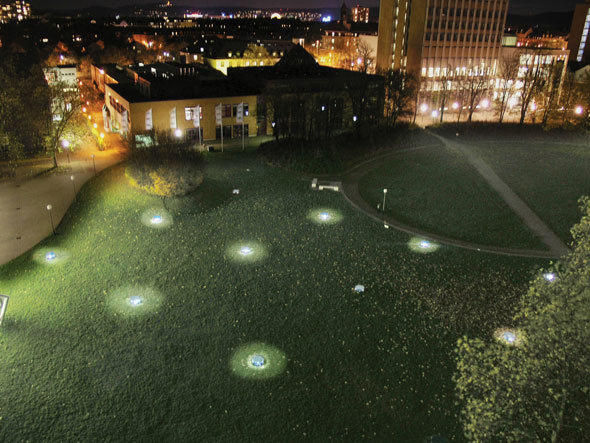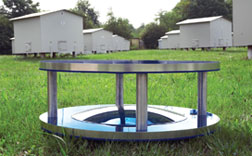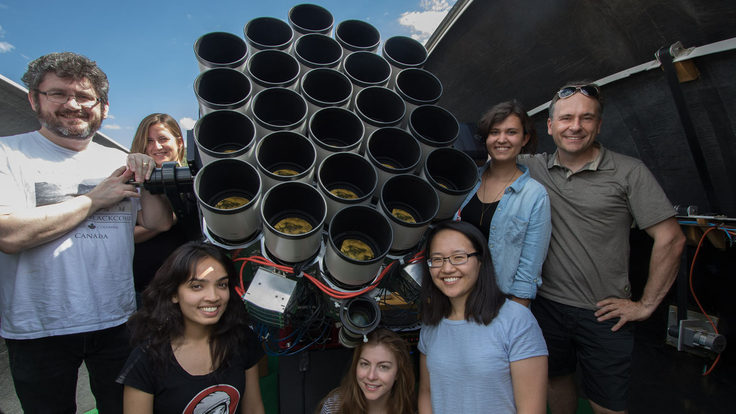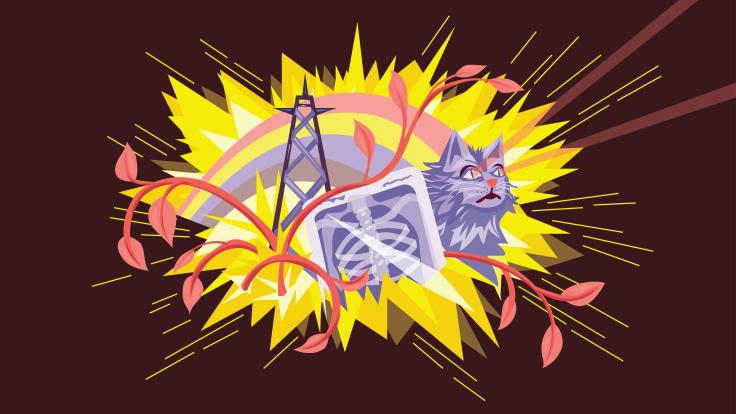Cosmic rays spray art across a lawn
 |
| Photo courtesy of Tim Otto Roth |
Bluish lights flash on a grassy field, like giant fireflies angling for mates—sometimes a single flash, sometimes a ripple of light moving fast, as if suitors have given chase. Then all 16 lights flash at once, and the whole field glows.
The display is based not on whiffs of pheromones, but on showers of cosmic rays.
These remnants of energy from the sun and stars collide with molecules in Earth's atmosphere and break up, creating cascades of lighter particles that rain harmlessly down.
Particle physicists with the German experiment KASCADE record some of those incoming particles on 252 detectors spread over an area the size of four soccer fields. The detectors measure each particle's mass, entry angle, and energy, data that show up as blips of light on the scientists' computer screens.
For the rest of us, Tim Otto Roth translates that data into art.
 |
| Photo courtesy of Forschungszentrum Karlsruhe |
The result is Cosmic Revelation, a portable set of 16 sculptures that combine mirrors and strobe lights. At its November premiere at the Forum of Karlsruhe University, people strolling among the sculptures had a chance to ponder the invisible particles that continually pass through their bodies.
Each sculpture links to a portion of the KASCADE detector array, which is also on the university grounds. When a particle from a cosmic ray shower strikes the array, the corresponding sculpture flashes its strobe light. The more energetic the particle, the longer the flash. The overall pattern of flashes reflects where the particle hit and the angle it came in at. A particularly energetic shower lights up the whole field.
The display expands on Roth's work with KASCADE in 2005, in which he translated particles passing through a detector into patterns on the Internet Art Façade, a wall of 76 light panels on the side of the House of Communication in Munich.
"The point is to create a feel for cosmic ray air showers, that they exist and that they come from different directions," Roth says. "I want to give the public a feeling of the energy, and looking at pixels on a screen is a different experience from seeing these powerful flashes."
Dates and locations of future installations are at http://tinyurl.com/d4beag
Tona Kunz
Click here to download the pdf version of this article.






